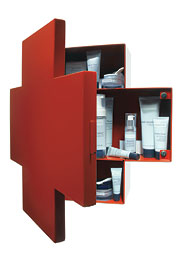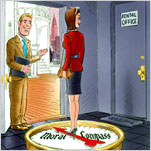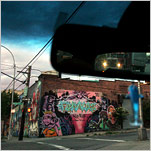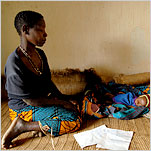If there is one thing you pay for in your $80 jar of eye gel or your $120 jar of night-repair cream, it is, in theory, efficacy. The stuff is supposed to work — to reduce wrinkles, to moisturize, to improve elasticity. Take a look at any fashion magazine or department-store counter, and you’ll find all sorts of claims to these effects. But the evidence backing them up is usually anecdotal at best, fraudulent at worst. So when doctors from the Johns Hopkins School of Medicine put their stamp of approval on a new skin-care line, this was something worth noting.

In 2003, Richard Rakowski, a businessman, Jane Terker, a beauty-industry executive, and Mark Potter, a product formulator, set out to create a company based on products that were clinically proven to do what they said they did. Accordingly, the marketing strategy would conform to scientific measurements of the effects those products actually had on skin. The concept, Rakowski told me, “is about bringing clarity to the amount of noise in the market.” To illustrate his point, he grabbed a glossy magazine and flipped to an ad for an eye cream. “Look,” he said. “It says that ‘81 percent see lids lifted,’ and then you look down, and in the small print it says that 81 percent is ‘percentage of women who reported visible improvement during a four-week consumer test.”’ This posed two problems. First, the ad said nothing about how many women had participated in the study. Second, there was nothing to indicate whether 81percent was, in fact, a statistically significant number. “And it’s a self-report of something completely subjective,” Rakowski said. “Visible improvement? Scientifically, this means nothing.”
Rakowski purchased Georgette Klinger, including the venerable company’s temple of skin care at 501 Madison Avenue, and rechristened it Klinger Advanced Aesthetics. Its Cosmedicine brand arrived in stores this spring and included products like Physical Conditioning Body Skin Therapy Lotion; Global Health, an S.P.F. 30 sunblock; and Opti-mologist, an eye cream. Cosmedicine does not advertise itself as antiaging. “There’s no such thing,” Terker says simply. What claims Cosmedicine does make are backed up by Dr. Fred Brancati, director of the division of general internal medicine at Johns Hopkins, and his team, who have verified that those claims match results from scientific studies.
Brancati prescribed protocols to measure how well Cosmedicine cleansers and creams actually cleansed, moisturized, reduced puffiness and so on and enlisted two independent labs, Clinical Research Laboratories and International Research Services, to test the products using a device called the Primos 3D Quantitative Skin Measurement System. Tools like high-resolution rapid video, a cutometer (basically a fancy pinch test), a ballistometer to measure elasticity and a chromometer to gauge dark circles under the eyes were put into play. Digital images were taken of the skin of 30 women before and after treatment, and the pixels meticulously compared, a process similar to, say, that used to measure a diabetic ulcer.
The Johns Hopkins teamrecommended that the third-party assessor would not be told which were the “before” and which were the “after” photos or even which photos were of the same women. “It’s not that these things have never been measured before,” Brancati says. “It’s that they’ve never been measured in the detail we imposed on the labs.” The standards that Brancati enforced eliminated all “self-reporting” — subjective data like “my skin feels better.” With the eye cream, for example, test results indicated a 19 percent decrease in under-eye puffiness and a 36 percent increase in elasticity after eight weeks. And on the Opti-mologist eye-cream box, those clinical results are listed: “36 percent improvement in elasticity, 19 percent reduction in under-eye puffiness.” (Which is much lower than “81 percent see lids lifted.”) Brancati says, “We chose outcomes that didn’t involve ‘self-regard’ or ‘satisfaction with the product,’ which is pure perception.”
On the packaging for Medi-Matte, an oil-control lotion, Klinger Advanced Aesthetics’s claims for the product are exactly the results that Brancati found: “35 percent decrease in visible shine, 39 percent increase in mattification, 37 percent reduction in pore size, 19 percent increase in hydration.” The two claims for Private Nurse Recovery and Repair Cream again match Johns Hopkins’s finding: “70 percent reduction in skin dryness, 32 percent increase in skin elasticity.”
“They’ll sink or swim on those numbers,” Brancati observed, “and they’re gambling that the market will prefer truly scientific numbers that are lower, sometimes much lower, than those in other marketing, but that are, in fact, scientifically real. They paid a price because they didn’t allow someone from marketing to cherry-pick results and mix in subjective claims. It strikes a chord with me as a researcher. I sense the market is filled with exaggerated claims. Some people just want to believe. But some people like truth.”
Rakowski, Terker and Potter are counting on it. On top of every box of Cosmedicine is the trademarked logo: “Truth Is Beauty.”














